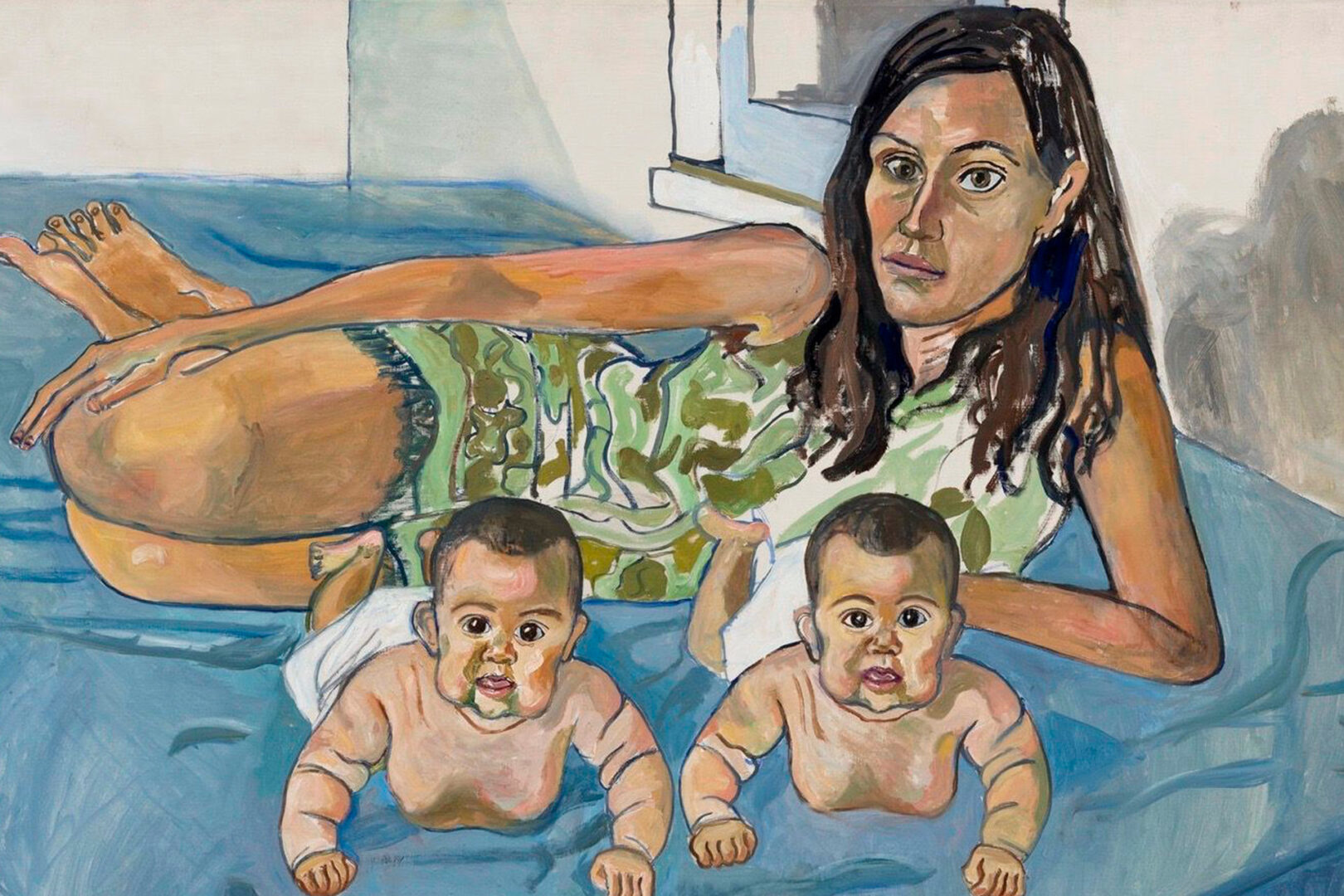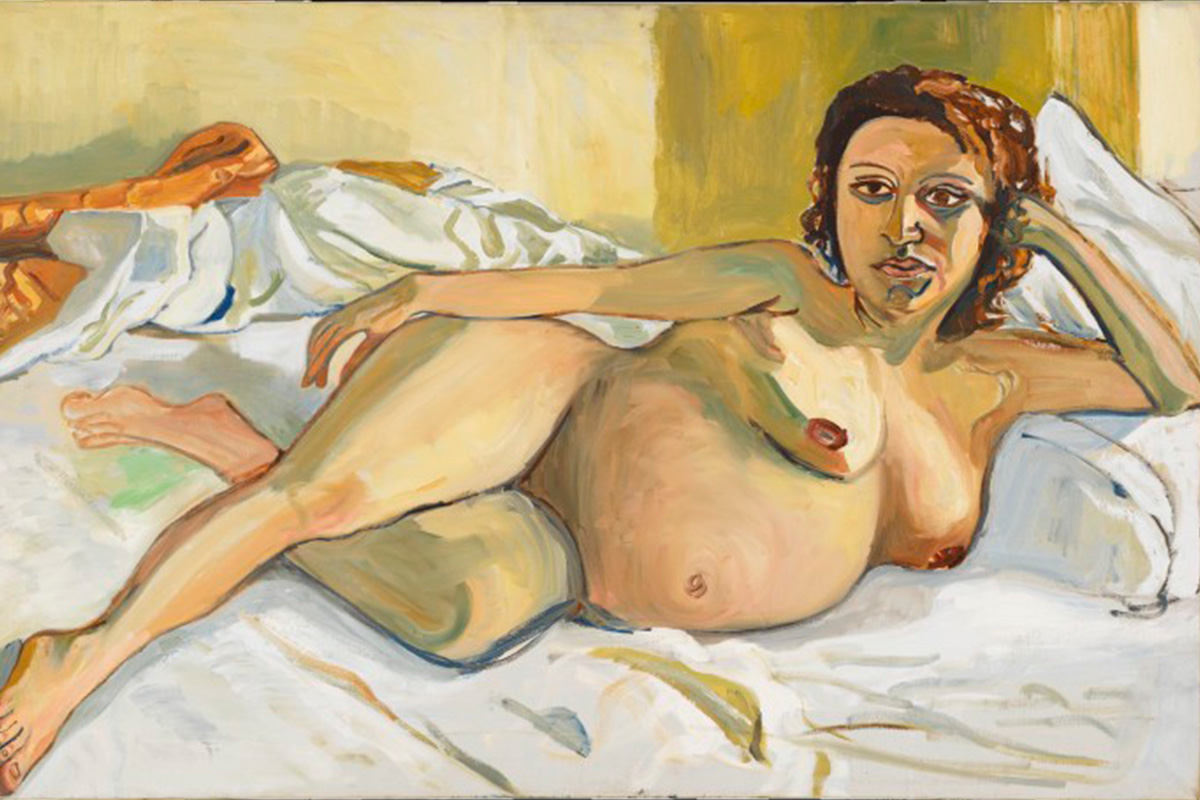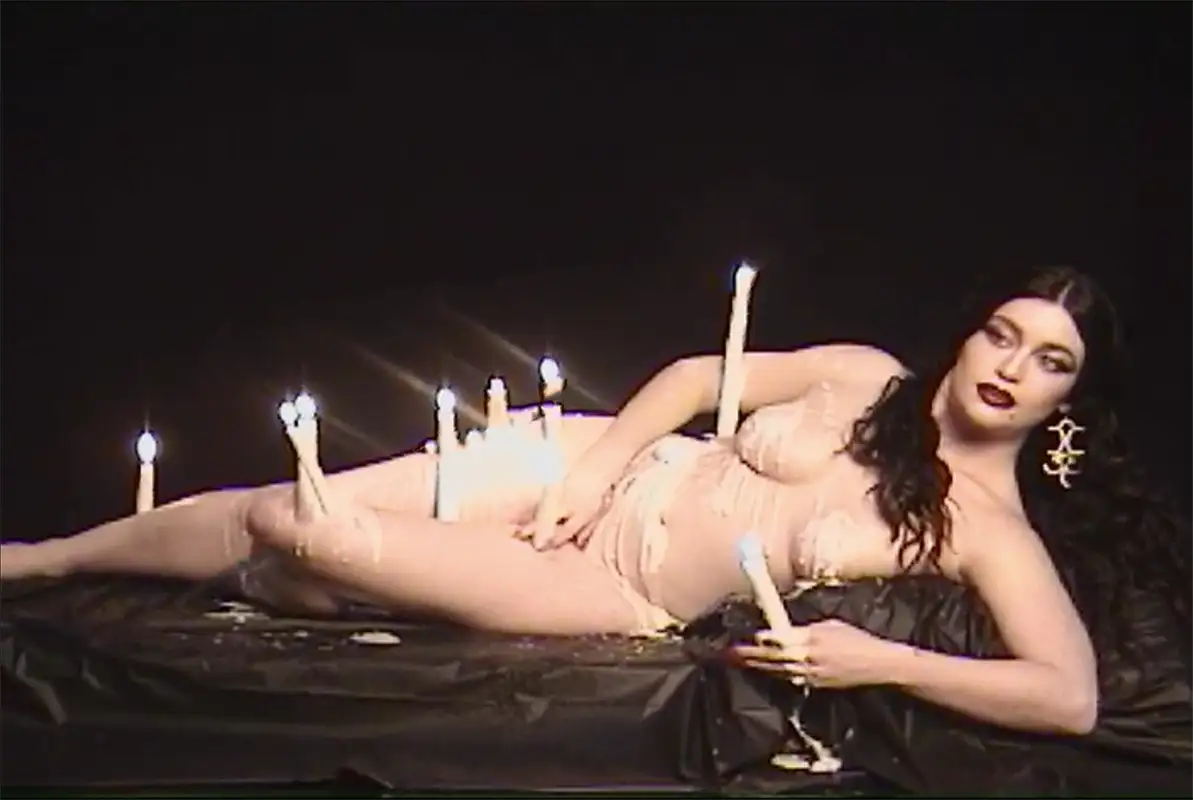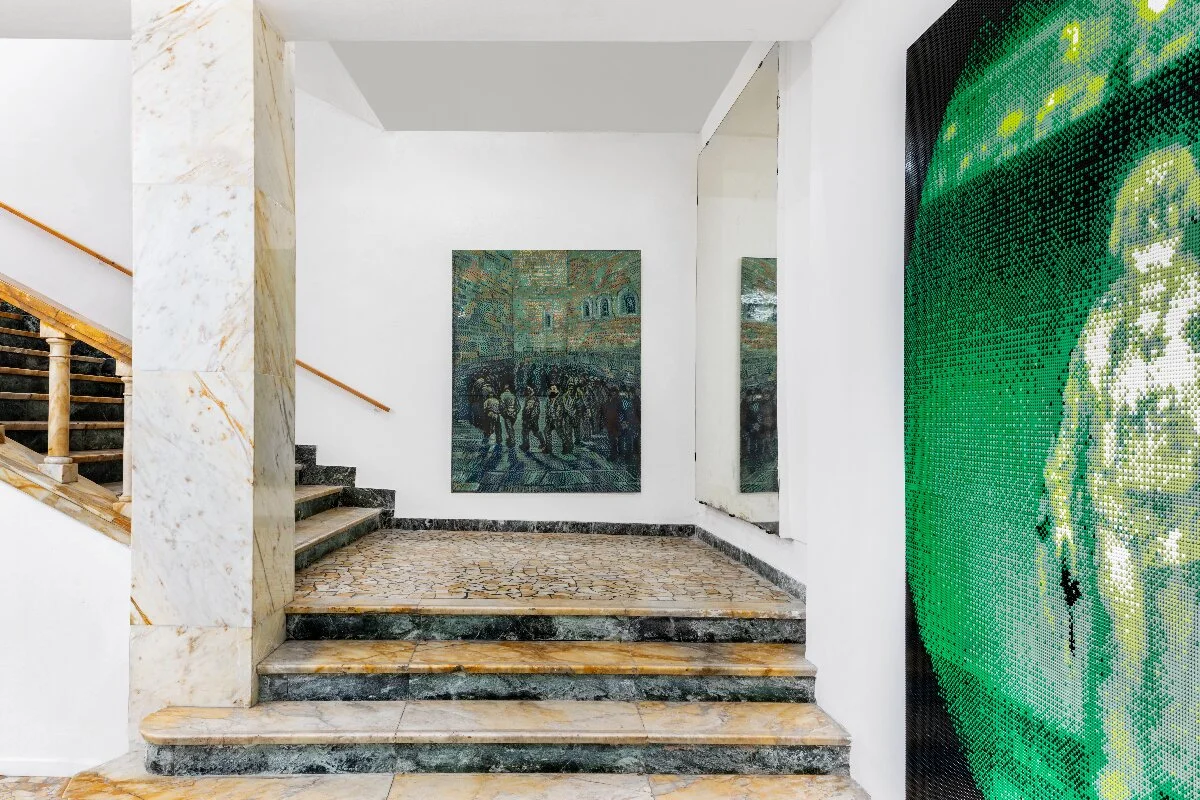Alice Neel’s candid portraits of American society shines light upon those who are underrepresented, impoverished, overlooked, flamboyant and unapologetic
Alice Neel – People come first
Portrait painting, historically viewed as a genre belonging to the elite, however, American artist Alice Neel disagreed. For her, anyone could be a subject of the practice. In her artistic career spanning over 60 years, Neel drew everyday people. Democratizing the genre by creating images of activists protesting against fascism and racism. Depicting queer artists and performers, figures of political organizations, members of the New York diaspora and family members.
A long-time resident of New York, the artist found the city and its people to be her most faithful subjects. Her candid portraits expose the human condition; evoking individuality, emotional intensity and vulnerability in the eyes of the viewer.
Neel approached her subjects as forces of change, signaling her commitment to equality and social justice which led critics to define her artistic practice as social realism. Through the individualist images of her subjects, she captured the social and political spirit of the times; remarking on poverty, feminism, racial and sexual equalities. The vast collection of work she left behind is considered to be an honest and realistic representation of Twentieth century American society.
A collector of souls
From her neighbors in the Spanish Harlem, to her queer friends in the art world, to her family. Neel created over a hundred portraits of the people who filled her life. She painted them with expressionist techniques. Exaggerating their figures with wonky lines and bold colors giving them personality and character; depicting their struggles and strength of endurance.
Though her collection of work also features landscape and still life; it is the people the artist painted that established her as one of the pioneering women artists of America. Her particular interest in people, gave her the title a collector of souls.
Pop-Art icon Andy Warhol (1970)
Perhaps one of the most famous souls she collected, features Pop-Art icon Andy Warhol (1970); seated with his eyes closed, partially undressed. Exposing his scarred body that came as a result of the surgery he underwent due to an attempt on his life two years earlier. In the portrait, Warhol appears wounded and isolated, portraying a moment of vulnerability.
There is honesty in Alice Neel’s portraits, an intimacy with her subjects; leaving them transparent in front of the eyes of the audience. The distortion of their figures and imperfection of their bodies are painted in captivating colors, unveiling a humanist belief that lies beneath the artistic practice. An understanding that people come first.
The female gaze
Nudity plays a striking role in Neel’s work. Her nude subjects, mostly women, are drawn in different stages of their life — from pregnancy, to motherhood, to old age. The depictions of the bare figures are notable for their lack of sexual connotations. They are unromantic and direct, revealing the artist’s interest in the human rather than the body itself.
It is the female gaze that the artist casts upon her subjects, which differentiates her work from her peers’. The portraits display an intimacy between Neel and her subject; a sensitivity towards motherhood, social roles of women and their natural ability for generation renewal.
In contrast to the traditional images that illustrate women as vulnerable. Indifferent and ageless beauties that act as objects of pleasure for the male gaze; Neel twists this notion by dignifying her subjects. She paints their reactions, emotions and gestures with psychological intensity that signals truthfulness and liberation.
Depictions of motherhood
Perhaps the most commanding portraits of Neel’s are of pregnancy. Though the images of women and children appear frequently throughout art history. The illustration of pregnancy tends to be a rare sight. This period of a woman’s life is usually hidden in artistic depictions. As the woman carrying a child is often perceived as an unclaimable body by the male gaze.
In a 2007 documentary made on Alice Neel, she discusses why she chose to paint pregnant women. She explains that «It isn’t what appeals to me, it’s just a fact of life. It’s a relevant part of life and it was neglected. I feel as a subject it’s perfectly legitimate, and people out of a false modesty.
Or being sissies, never show it, but it is a basic fact of life. Also, plastically, it is exciting. It’s part of the human experience. Something that primitives did, but modern painters have shied away from because women were always done as sexual objects. A pregnant woman has a claim staked out; she is not for sale».
Mother and Child (1982)
Motherhood becomes a common subject of examination in Neel’s work. Rather than painting the mother and child in stagnant, pre-choreographed poses. She captures a feeling of bewilderment that comes from bearing a child, expressing the psychological and physical complexities which exist with it.
In the painting Mother and Child (1982), Neel draws the portrait of her daughter-in-law Nancy. Holding her new born baby Olivia tightly across her face. Both subjects look at the viewer with a sense of puzzlement as Nancy realizes her new role as a mother. While her baby tries to take in this new world around her.
In an earlier painting titled, Degenerate Madonna (1930), a mother holds a ghostlike baby in her arms, grieving the loss of her child. In a personal reference, Neel draws this particular imagery after losing her first child due to an illness, and getting separated from her second daughter. The weakened female body and blue hues illustrate the shock and desperation the mother feels after experiencing maternal loss. The image looks inward at the human experience, displaying the pain women privately carry throughout their lives.
Humanism at the core
Transcending from the personal to political, Neel’s paintings move beyond individuals and become honest reflections of their times. Having lived through the Great Depression, racial segregation, women’s rights and gay liberation movements, her work is embedded in humanism. With a genuine interest to bring light upon those who are underrepresented, impoverished, overlooked, flamboyant and unapologetic.
In the painting Geoffrey Hendricks and Brian (1980), which becomes the highlighting of the Alice Neel: People Come First Exhibition at the MET (2021). Neel draws a rather romantic portrait of a same-sex couple she befriends. She showcases her inclusive spirit and acceptance of sexual minorities in a time when members of the LGBTQ communities were facing scrutiny amongst the wider American public.
T.B. Harlem (1940)
In the painting T.B. Harlem (1940), Neel’s subject becomes her Puerto Rican neighbor Carlos Negrón in Spanish Harlem; laying on the bed with his hand resting on a bandage over his chest. The bandage covers the wound from a thoracoplasty procedure, resulting in the removal of ribs due to a tuberculosis infection. While the face of the subject expresses strength in the midst of suffering. The drawing calls attention to poverty and the problems residents face living in overcrowded and underprivileged neighborhoods.
Alice Neel’s portraits act as her form of social activism, they are intertwined with her political views. Reflecting on the social issues faced by American society. It is her adaptation of the egalitarian approach that makes her artistry display the rich and poor, black and white, famous and hidden — all equally. The end result of her work is a series of portraits that do not belong to the artist, but the people.
Alice Neel
Considered to be one of the greatest American portraitists of the Twentieth century. Alice Neel was a visual artist known for her paintings of people, landscape and still life. She was born in 1900 in Pennsylvania and died in 1984 in New York City. Her work was recently exhibited in the Metropolitan Museum of Art (New York City, 2021). Titled Alice Neel: People Come First.




















